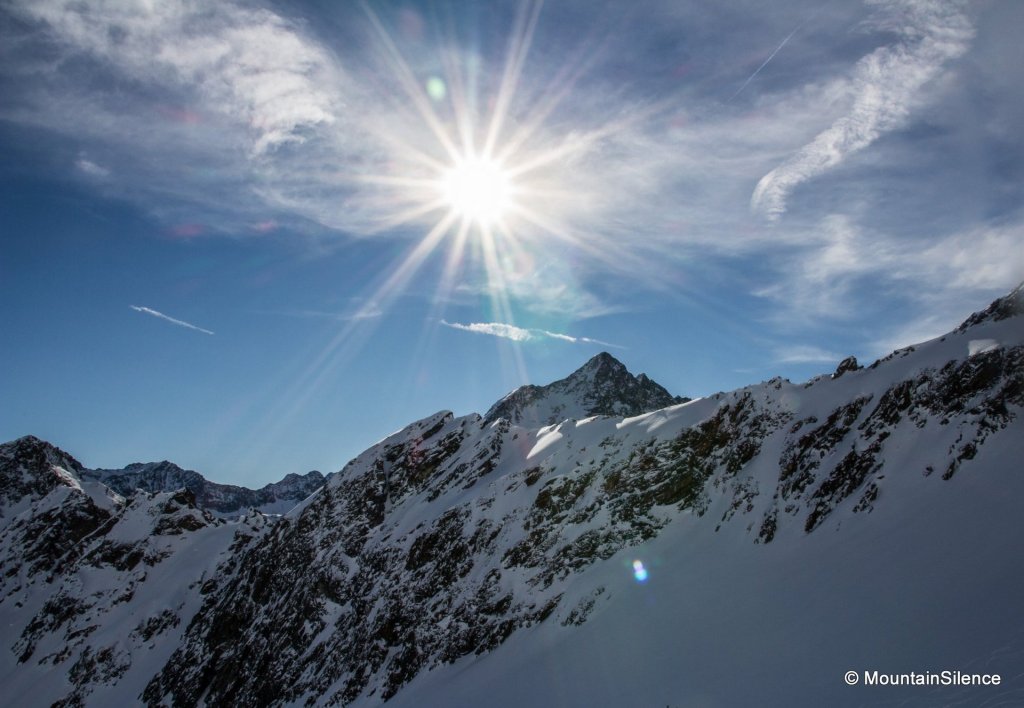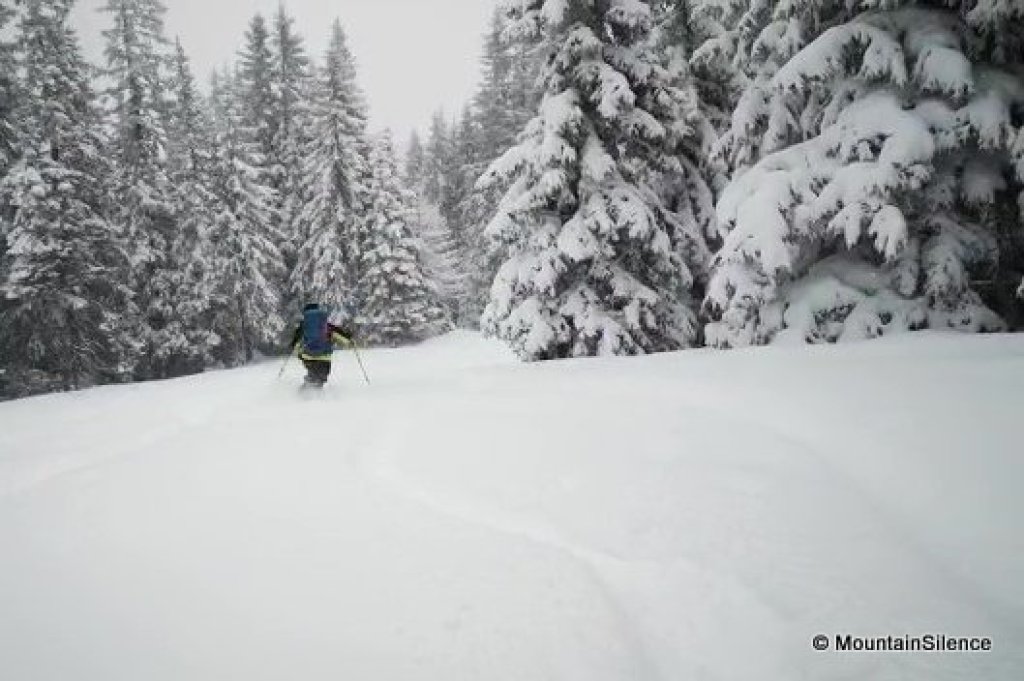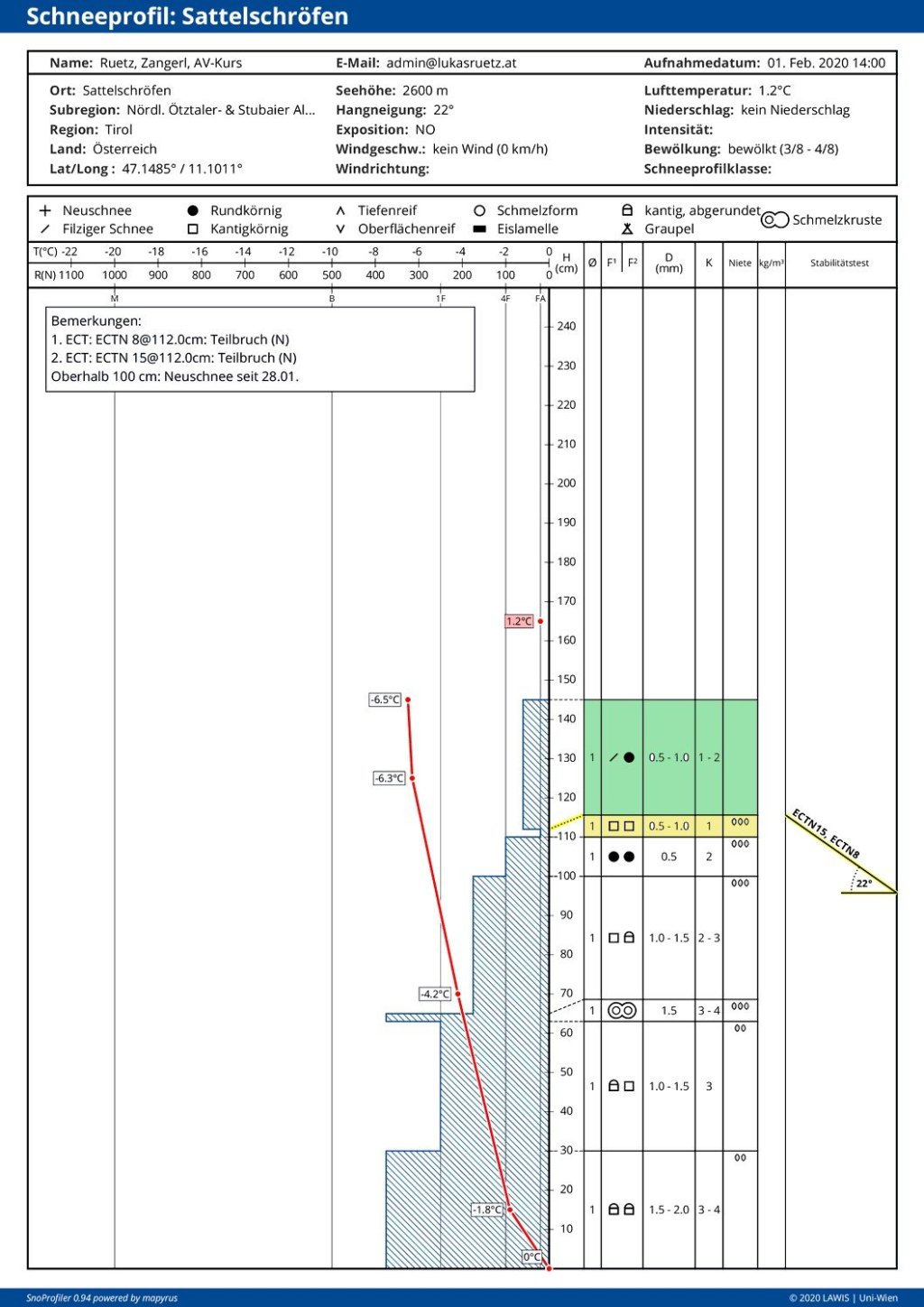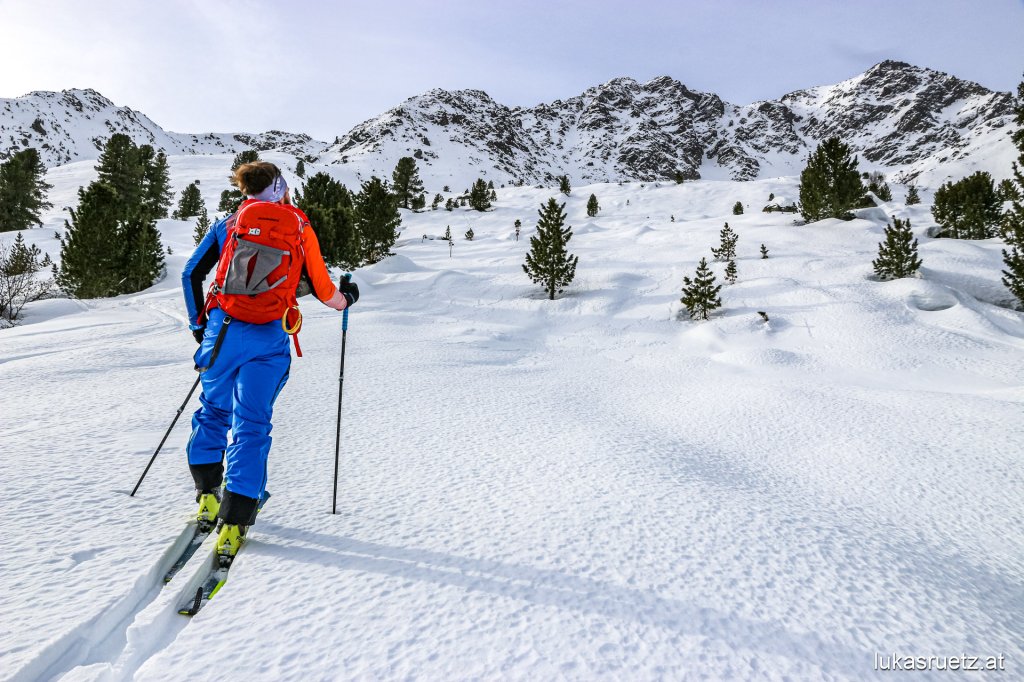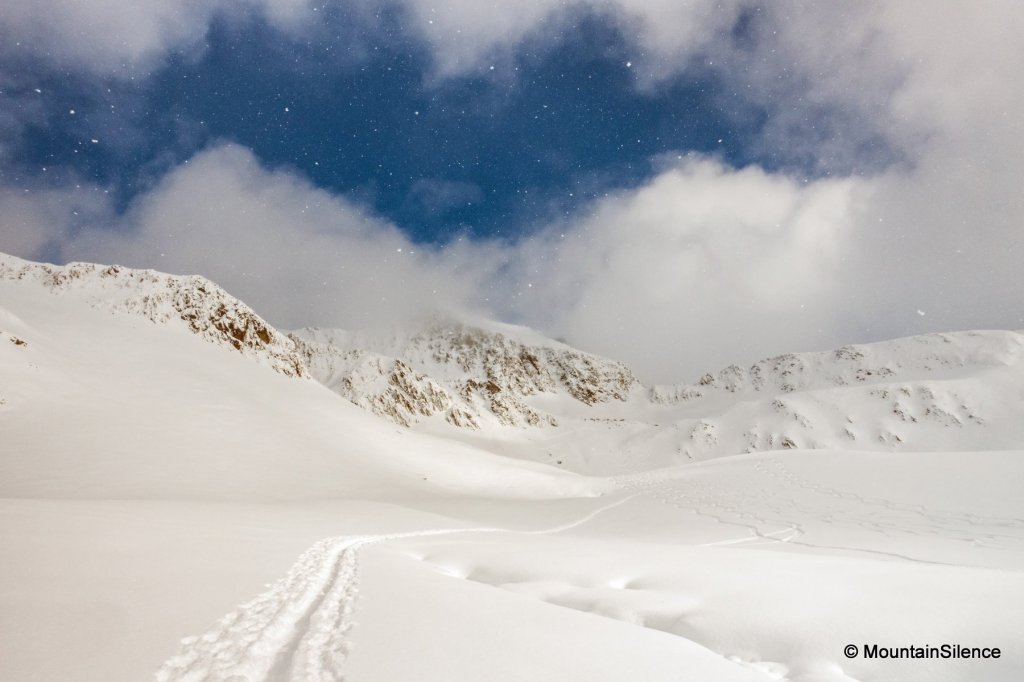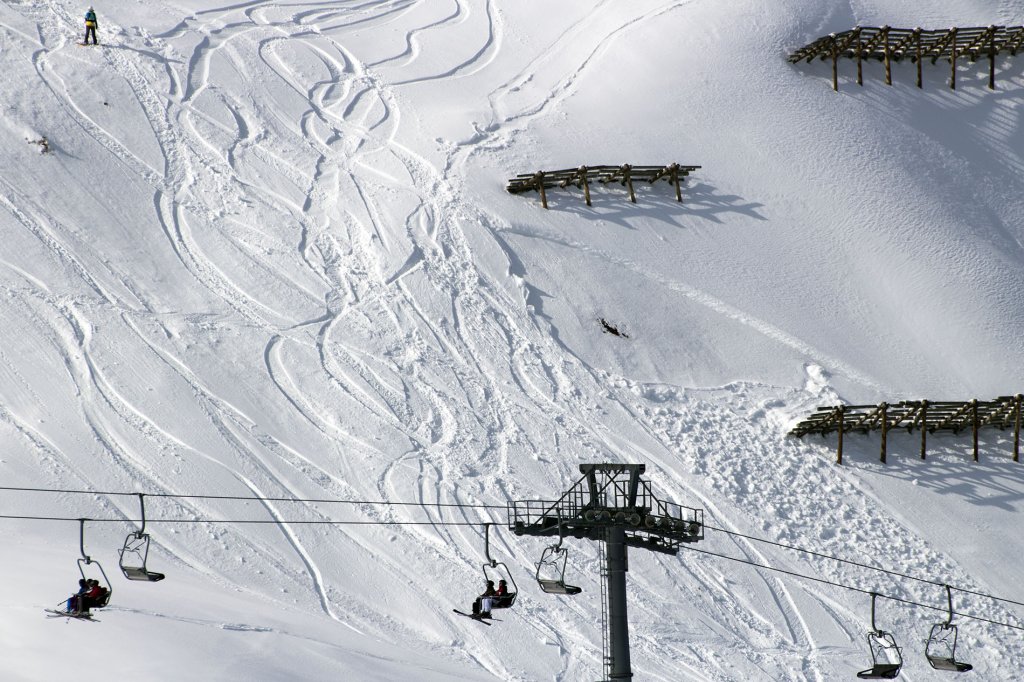The old snow problem is the most difficult of the five avalanche problems to deal with. Appearances are deceptive: you often can't see any danger spots in the terrain, which gives us a feeling of safety. The possibly existing weak layer is quickly forgotten in a seductive powder dream.
That's why you should explicitly avoid the exposures and altitude ranges specified as critical in the avalanche report on such days and avoid the main corridors of the much-traveled fashion tours. Even if the untracked slope just next to it looks fantastic!
As Lukas already mentioned in the previous Gestöber, the pimple powder and in some cases also the surface rime became a weak layer due to the overlay of new or drift snow. This was acute on W-N-E slopes, especially in areas with little or no traffic, before the snowfall. Why are corridors with a lot of traffic safer than those with little traffic - nap powder was also present there?
